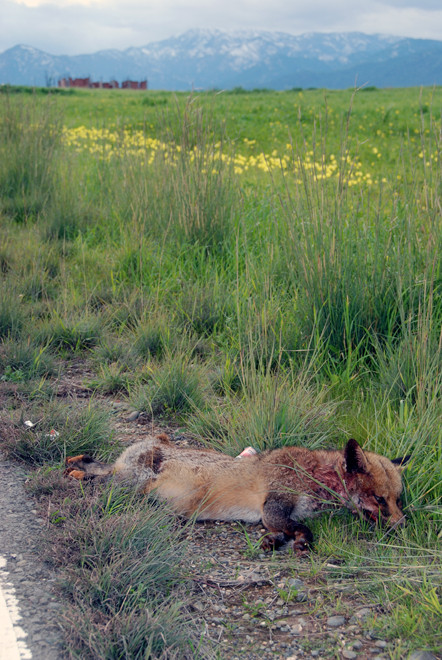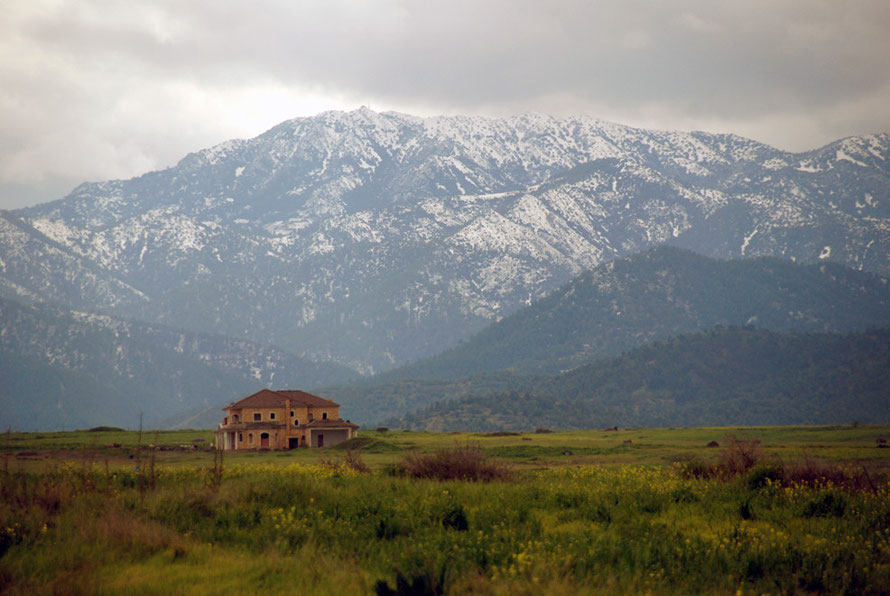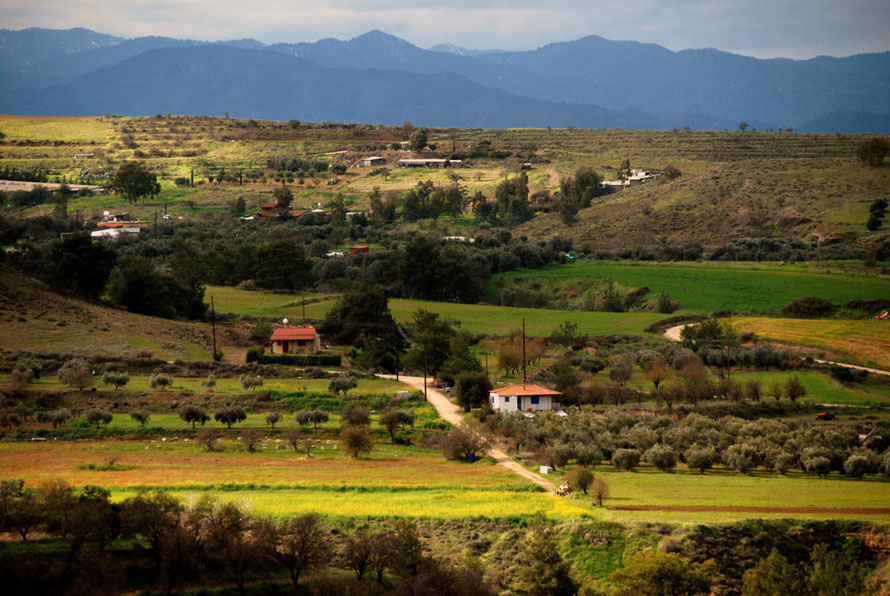Interiors V. To Asinou
Once beyond Peristerona and Astromeritis the road for Asinou swings sharply to the left and climbs up through the table-land at the edge of the Mesaoria.
It was a funny old day. The sun shone benignly in Peristerona but now clotted clouds were gathering as the snow-covered northern Troodos reared-up from the plain.
After the first climb the road enters a strange open plateau. It had a grim feel that day and felt like a film-set for some kind of Gothic dark-doing.
A large abandoned house sits forlorn and alone in the middle of the plateau. I pulled over and got out of the car to take a few photographs. The lush green and yellows of the grassland studded with oxalis were muted under the lowering cloud cover.
As I was getting back into the car I saw a fox, dead, almost hidden in the verge. It was the second time I had seen a fox in Cyprus. The first time was just a glimpse of a disappearing tail on the path above Cedar Valley. On my brief travels on this visit I had seen many squashed cats along the roads. But no foxes.
The fox was a pretty gruesome sight. It had been smashed into by some kind of vehicle. It looked freshly dead, its back legs all wrenched around, its head bloodied, its front paws crossed as if asleep. One eye open catching the shifting light of the day, the neck of a broken bottle resting precariously on its back. How had that gotten there? Had someone run it over and gone back and placed a bit of bottle there as some kind of a trophy? Or just mere chance?
After half an hour of frustrating searching on the internet it turned out the bottle neck was from a 'Tropical Watermelon'-flavoured Bacardi Breezer.
It's not as if you can drive up the A2 in Kent in the UK without seeing dead foxes any day of the year. But this seemed more personal. Somehow more precious.
The fox itself looked in good condition, with a thick coat of grey and tan fur, darker on the head, and amazingly russet orange on the back of its hind legs. Only now, looking again at the
photographs I took, do I realise it has no tail. Did someone stop to cut it off, a trophy? It looks like it.

The Cyprus Fox (Vulpes vulpes indutus) is an endemic subspecies of Cyprus and the only carnivorous mammal of the island.
A government pamphlet states,
It can be found in many areas even though its population has been constantly declining over the last two decades. Ecologists consider the fox a useful animal with an important role in the ecosystems. In Cyprus, there is still great prejudice against this sympathetic animal (see The Fauna of Cyprus).
I continued on my way through the villages of Vyzakia and Nikitari, past olive and almond orchards and then up a steep-walled valley with Brutia pines to the church at Asinou.





